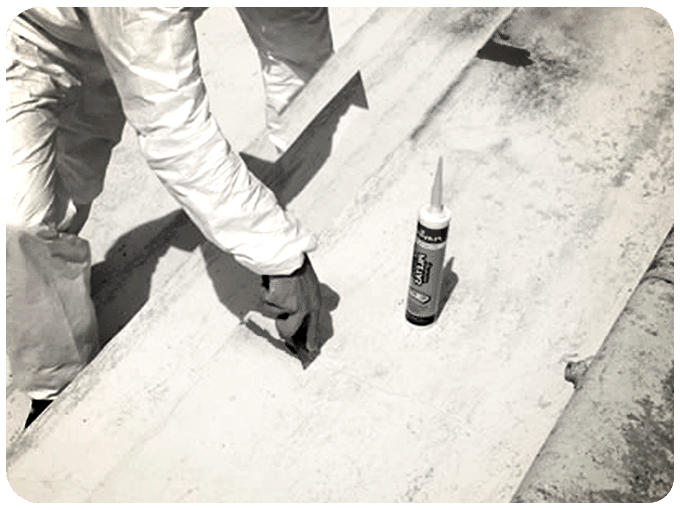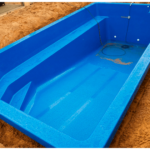Información actualizada April 7, 2024
FIBERGLASS POOLS – in terms of choosing a swimming pool for your home, one of the alternatives which you may remember is a fiberglass pool.
Those sorts of pools are regarded for his or her durability and maintenance minimum, which makes them a famous preference for many house owners.
However, just like any other type of pool, fiberglass pools can still suffer from Breaks over time. In this post, we’ll take a look at the reasons fiberglass pools Break, how often it happens, and what you can do to prevent it.
Table of Contents
What is a Fiberglass Pool?
A fiberglass pool is made from molded fiberglass and is installed in the ground. These pools are known for their durability, low maintenance, and quick installation. Fiberglass pools are also resistant to algae and other types of bacteria, making them a popular choice for many homeowners.
Why Do Fiberglass Pools Break?
Fiberglass pools can Break for a variety of reasons, including:
- Improper installation: If the pool is not installed properly, it can lead to Breaks over time.
- Ground movement: If the ground shifts or moves, it can cause the pool to Break.
- Chemical imbalances: If the chemical levels in the pool are not balanced, it can lead to Breaks.
- Sunlight Exposure: If your fiberglass pool is exposed to direct sun for long periods of time, it can cause the fiberglass to weaken and eventually Breaks to form.
- Wear and tear: Over time, the pool can suffer from wear and tear, which can cause it to Break.
How Often Do Fiberglass Pools Break?
Fiberglass swimming pools are recognized for having a long useful life. However, like any other type of pool, fiberglass pools can still suffer from Breaks over time. The frequency with which Breaks can appear can depend on a variety of factors, including the quality of the pool’s manufacture, installation, and maintenance.
On average, fiberglass pools can last anywhere from 25 to 30 years. However, it is not uncommon for fiberglass pools to suffer from Breaks after a few years. The key to preventing Breaks is to ensure that the pool is installed properly and that the chemical levels are balanced.
Signs of a Breaked Fiberglass Pool
If you suspect that your fiberglass pool has suffered from a Break, there are a few signs that you can look out for, including:
- A visible Break in the pool shell
- Water loss
- Uneven water level
- Pool surface is rough to the touch
- Discoloration in the pool shell
If you notice any of these symptoms, it is important that you find and contact a professional pool repair company, manufacturer or installer as soon as possible to prevent further damage.
What Causes Pool Breaks?
There are several factors that can cause a pool to Break, including:
- Ground movement
- Temperature changes: Extreme changes in temperature can cause the pool to expand and contract, leading to Breaks over time.
- Poor maintenance: if the pool is not maintained properly, it can cause chemical imbalances, excessive use of chemicals that are not suitable for fiberglass can cause the pool to start showing Breaks.
- Environmental: Exposure to extreme weather conditions, such as freezing or hail, can cause the pool to Break.
Preventing Fiberglass Pool Breaks
Preventing Breaks in your fiberglass pool can help prolong its lifespan and save you money in the long run. Here are a few tips to prevent Breaks:
- Proper installation: Ensure that your pool is installed by a professional to avoid any installation errors that can lead to Breaks.
- Maintain chemical balance: Test the chemical levels in your pool regularly to ensure that they are balanced. Improper chemical balance can cause the pool to weaken and eventually Break.
- Protect against UV rays: Consider installing a pool cover or shade structure to protect your pool from direct sunlight, which can weaken the fiberglass and cause it to Break.
- Control ground movement: Avoid building your pool in areas with unstable soil or close to trees whose roots can cause ground movement.
- Regular maintenance: Regularly clean and inspect your pool for any signs of wear and tear. Address any issues immediately to prevent them from becoming bigger problems.
Repairing a Breaked Fiberglass Pool

If your fiberglass pool shows a Break, it’s important to address the problem as soon as possible to prevent further damage. A professional pool repair company can assess the damage and recommend the best repair method.
The repair method used will depend on the severity of the Break. Small Breaks can often be repaired with a fiberglass patch, while larger Breaks may require a more extensive repair.
How to Find a Professional Pool Repair Company
When looking for a professional pool repair company, consider the following:
- Experience: Look for a company with experience in repairing fiberglass pools.
- Reputation: Read reviews and ask for referrals from friends and family.
- Licensing and insurance: Ensure that the company is licensed and insured to protect yourself in case of any accidents or damages.
- Warranty: Look for a company that offers a warranty on their repairs.
Fiberglass Pool Maintenance Tips
Proper maintenance can help prolong the life of your fiberglass pool and prevent Breaks.
Here are some good tips:
- Regular Cleaning – Regularly clean the pool walls and floor to prevent a buildup of dirt and debris.
- Skim the surface: Use a skimmer net to remove any leaves or debris from the surface of the water.
- Maintain chemical balance: Test the chemical levels in your pool regularly and adjust as necessary to prevent chemical imbalances that can cause the pool to Break.
- Monitor water levels: Ensure that the water level is always above the skimmer intake to prevent air from entering the system, which can cause damage to the pool.
- Keep up with maintenance: Regularly check the pool pump, filter, and other equipment to ensure that they are working properly.
The most commonly used products for repairing a Break in a fiberglass pool
| Product | Description |
|---|---|
| Fiberglass patch kit | A kit that contains fiberglass cloth and resin for patching small to medium-sized Breaks. |
| Epoxy putty | A two-part epoxy that can be molded and shaped to fill in larger Breaks or holes. |
| Polyurethane foam | A foam filler that can be injected into larger Breaks to provide added support and stability. |
| Underwater sealant | A sealant specifically designed for use underwater, ideal for sealing small Breaks or leaks. |
| Gelcoat patch kit | A kit that contains gelcoat and hardener for repairing cosmetic damage such as surface scratches or chips. |
List of some of the most popular products and brands for repairing Breaks in fiberglass pools
- Fiberglass patch kits:
- AquaBond
- AquaGuard
- Aqua-Stitch
- Epoxy putty:
- J-B Weld
- PC Products
- Loctite
- Polyurethane foam:
- Great Stuff
- Touch ‘n Foam
- Underwater sealant:
- Flex Seal
- AquaFlex
- SikaBond
- Gelcoat patch kits:
- Evercoat
- Fibre Glast
- TotalBoat
Comparison against Breaking of fiberglass, concrete, vinyl and gunite
Compared to concrete, vinyl, and gunite, fiberglass is more flexible and can withstand a wider range of temperatures without Breaking. Concrete, on the other hand, is prone to Breaking over time, especially in colder climates where freeze-thaw cycles are common. Vinyl liners can tear or puncture, which can lead to leaks and expensive repairs. Gunite is also prone to Breaking, and requires more frequent maintenance to keep it in good condition.
In terms of wear, fiberglass pools also have the advantage over the other materials. Fiberglass is non-porous, which means that it resists algae growth and staining better than concrete and gunite. Vinyl liners are also prone to fading and discoloration over time, especially if they are exposed to sunlight or chemicals. Gunite requires more frequent acid washing to prevent staining and discoloration.
Overall, fiberglass is the best choice for homeowners who want a durable, low-maintenance pool that will last for years to come. While the upfront cost of a fiberglass pool may be slightly higher than other materials, the long-term savings on maintenance and repairs make it a wise investment.
Comparison against Breaking between above-ground vs. in-ground fiberglass pools
We say that both above-ground and in-ground fiberglass pools are great options for homeowners. However, there are some differences between the two that you should consider before making your decision.
When it comes to installation, above ground fiberglass pools are usually easier and faster to install than in-ground pools. This is because there is no need to dig, which can be an expensive and time consuming process. Additionally, above ground pools can be installed on almost any level surface, while inground pools require a flat, level area for installation.
In terms of maintenance, both above-ground and in-ground fiberglass pools require little maintenance compared to other pool materials. Fiberglass is naturally resistant to algae growth, which means you’ll spend less time and money on chemicals and cleanup. However, above ground pools require more maintenance to keep the pool structure and surrounding area in good condition.
When it comes to durability, both above-ground and in-ground fiberglass pools are strong and long-lasting. However, in-ground fiberglass pools are generally considered more durable because they are more anchored to the ground. Above ground fiberglass pools are generally supported by a metal frame and can be more vulnerable to damage from external factors such as wind and weather.
In general, whether you choose an above-ground or in-ground fiberglass pool will depend on your specific needs and preferences. While above ground pools are usually easier and faster to install, inground pools are generally considered more durable and offer a more permanent solution.
Conclusion
Fiberglass pools are a popular choice for homeowners due to their durability and low maintenance. However, like any other type of pool, they can still suffer from Breaks. Preventing Breaks through proper installation, maintenance, and protection can help prolong the life of your pool and save you money in the long run.
FAQs About Fiberglass Pools
How can I tell if my fiberglass pool has a Break? Signs of a Breaked fiberglass pool include a visible Break in the pool shell, water loss, uneven water level, rough pool surface, and discoloration in the pool shell.
How often should I test the chemical levels in my fiberglass pool? Chemical levels in your fiberglass pool should be tested at least once a week.
Can I repair a Break in my fiberglass pool myself? It is not recommended to repair a Break in your fiberglass pool yourself as it requires specialized knowledge and equipment. It is best to hire a professional pool repair company to handle the repair.
Can a Break in a fiberglass pool be fixed? Yes, Breaks in fiberglass pools can be fixed through a variety of repair methods depending on the severity of the Break.
How long does a fiberglass pool typically last? With proper maintenance and care, a fiberglass pool can last up to 25 years or more.
Are fiberglass pools more prone to Breaking than other types of pools?:
With right renovation and care, a fiberglass pool can last up to 25 years or more.
Are fiberglass swimming pools greater liable to Breaking than different kinds of swimming pools?: Fiberglass pools are usually less prone to Breaking than different forms of pools because of their flexibility and durability. However, Breaks can still occur due to various factors such as poor installation, environmental factors, and poor maintenance.


